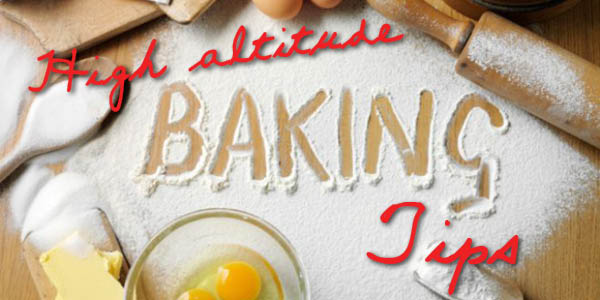For many people that have come to live in Cuenca, Quito, Loja or any other Andean city in Ecuador, there is always a challenge in baking at altitude that makes it hard for us to enjoy our favorite cakes or baked foods. They come out flat or they get dry or something else happens, for which we always ask ourselves “why does this happen and what can I do?”
Even with my training as a professional chef, it has been really difficult to get used to baking at elevations. I have developed some tips that will help your baking; however, always keep in mind that many of the products that you find here in Ecuador are very different from the ones in the US or Europe. For example, the quality of the flour, eggs, sugar, syrups and many other products will affect what you’re baking.
[color-box color=”gray”]
Baking At Altitude: 6 Tips
- Subtract 1 – 3 tablespoons (15 – 45 ml) sugar per cup (250 ml). A mottled surface on a cake indicates too much sugar. Then, if needed, subtract 1 – 2 tablespoons (15 – 25 ml) fat per cup (250 ml) of fat.
- Add an additional egg or egg white. This adds more liquid (see #5), as well as protein, which coagulates and makes the cake set faster. Some cooks also add 1 tablespoon (15 ml) more flour per cup (250 ml) flour.
- Increase baking powder or baking soda by 1/8 to 1/2 teaspoon (.5 ml to 2 ml) for every teaspoon (5 ml) called for in cake recipes. You may find that quick breads (biscuits, muffins, coffee cakes), squares, and cookies, which all have a stronger cell structure, don’t need adjusting.
- To allow for moisture loss, add 1 – 2 tablespoons (15 – 25 ml) extra liquid per cup of liquid. For elevations above 4,921 feet (1,500 meters), add up to 4 tablespoons (60 ml) liquid as needed.
- Beat egg whites for foam cakes (angel, sponge, chiffon) just until soft peaks form, so they’re still elastic enough to expand as the batter rises.
- Increase baking temperatures by 25 degrees F (15 C) to allow baking to set before cells overstretch. [/color-box]
These are some of the things you can do to perfect your high altitude baking skills. Also keep in mind that, here in Ecuador, margarine is definitely not the best product to use for baking — it is better to use real butter because this will help to maintain moisture and consistency of your baked goods. One other suggestion is dry out your flour by baking it by itself at a low temperature in the oven for a few minutes — this will take some of the moisture out of the flour so it will absorb other liquids faster and better.
At the end of the day, the best way to bake at altitude is to play with your recipes. Changing quantities and ingredients and checking baking temperatures can impact your results because each product and liquid that you add and the oven that you use will impact the quality of your baked treats.




















One Response
Thank you for the tips.
How would you fix a pate a choux recipe and tart dough. Pate a choux comes out flat and tart dough won’t hold the shapes
Thank you